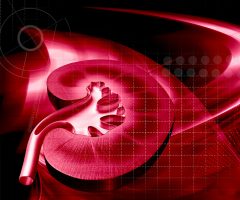Understanding shock wave lithotripsy
Shock wave lithotripsy is a common, non-surgical treatment that uses shock waves to break kidney stones into small fragments. We answer the “who, what, where, why and hows” of lithotripsy below.
Why is lithotripsy used?
Lithotripsy is used because it is minimally invasive and highly effective. Kidney stones are pulverized into small particles, which are then faster, easier and less painful to pass. The shock waves used in lithotripsy affect only the kidney stone, not the surrounding tissues, making the procedure relatively safe. Most patients will pass the stone fragments within days or weeks of treatment.
Who is a candidate for lithotripsy?
Most patients with kidney stones are able to pass the stones without medical intervention, apart from over-the-counter pain medication. Lithotripsy may be recommended under the following circumstances:
- The stone is too large to pass without assistance (usually larger than 5 mm),
- The stone is not passing on its own,
- The stone is blocking urine flow,
- The stone is causing bleeding,
- The stone is getting increasingly bigger, or
- The patient has only one working kidney.
Some patients are not good candidates for lithotripsy, including the following:
- Patients with very large stones or very hard stones,
- Patients who are very overweight, and
- Patients who are pregnant.
Where and how is the procedure performed?
In southern Alberta, shock wave lithotripsy is performed at the Rockyview General Hospital.
Most patients are given a sedative and painkillers through an IV to help them relax and remain still during the procedure. They are then positioned on the lithotripsy machine, which looks like a bed. The kidney stone is targeted with x-rays or ultrasound to ensure the precise location, and a water-filled cushion is placed between the patient’s skin and the shock-wave generator, in order to conduct the shock waves.
During the procedure, patients hear a clicking sound and feel a tapping sensation. This is the activation of the shock-wave generator, as shock waves enter the body.
Lithotripsy takes approximately 60 minutes. Patients are monitored for at least an hour following treatment and are then sent home with an accompanying person.
What are the risks of lithotripsy?
It is normal for patients to experience some pain following lithotripsy, particularly when passing kidney stone fragments.
Complications following lithotripsy are rare, but can include the following.
- Internal bruising in and arounds the kidney Urinary tract infection
- Blocked flow of urine caused by stone fragments blocking the urinary tract (this may require further treatment)
- Infection
- Heavy bleeding
Fever, chills, shakes and prolonged pain are not normal following lithotripsy. They may indicate an infection or blockage. Patients should seek medical attention if they have any of these symptoms.
Additional information is available from the Canadian Urological Association.




